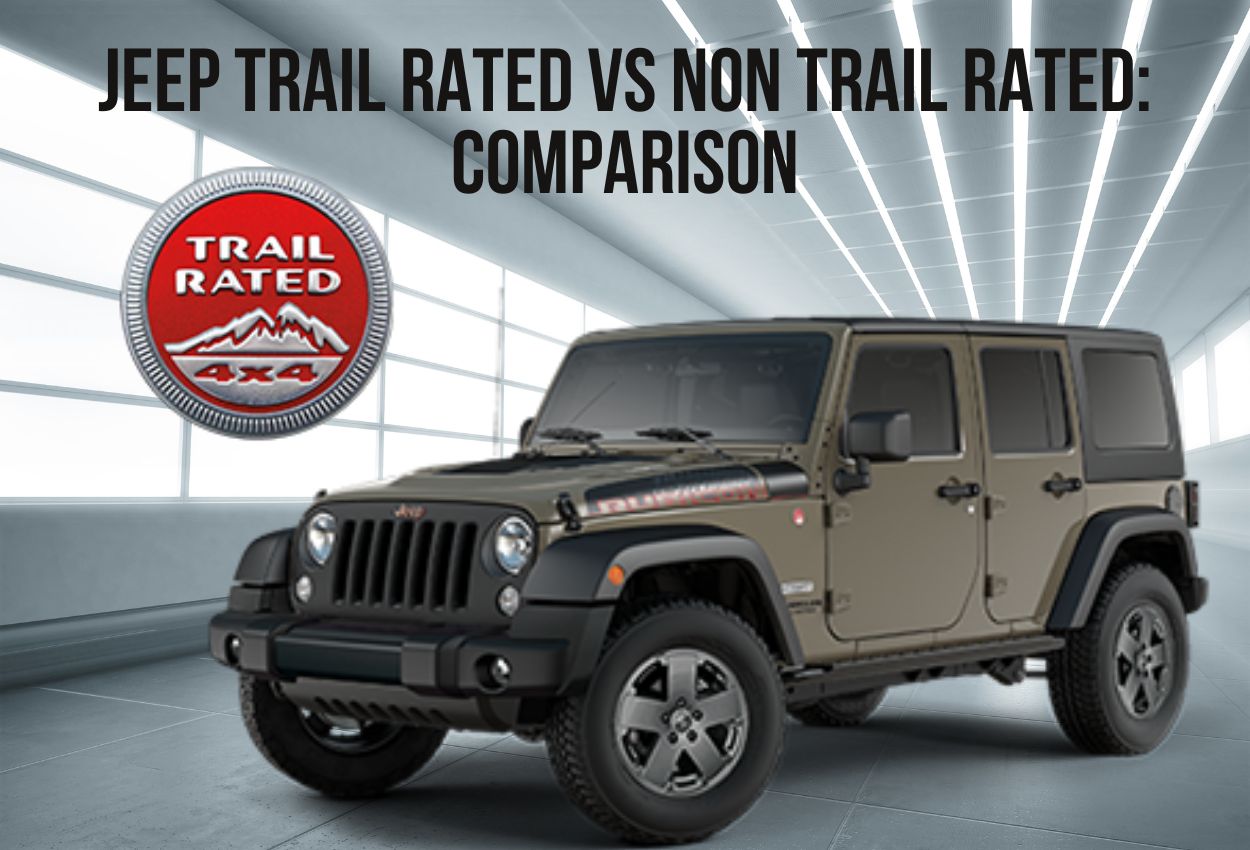If you’re shopping for a vehicle, you might have heard the term “Trail Rating” or a trail-rated badge. What do these terms mean, and how do they impact your Jeep’s efficiency?
Are Jeeps that aren’t trail-rated efficient? Are they unable to travel on rough terrains? We’ll examine the distinctions between Jeeps that have a trail rating badge and Jeeps that don’t in this article to assist you in deciding on the one that best meets your preferences as we look at Jeep models that are Trail Rated vs Non trail Rated.
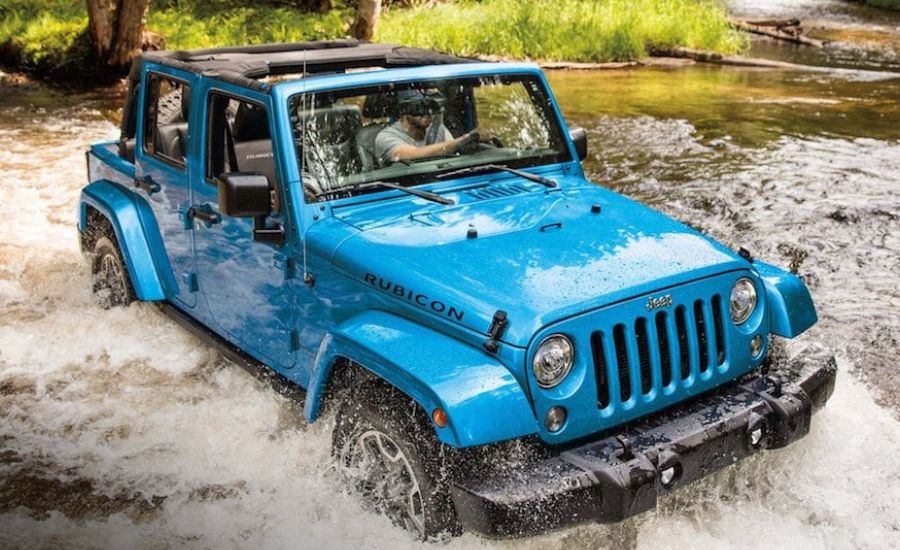
Contents
Trail-rated Jeeps: overview
Earning the Trail Rated label requires a Jeep brand vehicle to pass a battery of testing in categories like the stability of its tire on a surface, the maximum depth of water it can cross without its body getting wet, its ability to move and direct with ease, its ability to keep all four tires firmly planted on rough terrain, and its ground clearance.
It is a mark of excellence in rough terrain capability for the Jeep model. The Rubicon trail is the most common, famous, and challenging path known, but a Jeep does not have a complete Rubicon trail for it to have a badge.
The test is held in the Sierra Nevada mountains and is fully facilitated by the Nevada automotive test center.
Jeeps like the Jeep Wrangler, Jeep Cherokee, Jeep Compass, and the Grand Cherokee are assessed to make sure that a Trail Rated Jeep is ready to tolerate any off-road problems that may arise; these tests are carried out in a range of settings, and they are the major distinction when examining Jeep Trail Rated vs Non-trail Rated.
Testing categories for a Trail-rated Jeep
A total of five types of tests are required to be passed before a car can obtain the Trail Rated badge, these tests are carried out in a variety of settings and terrains.
Jeeps that excel in these tests obtain the Trail-rated badge and are equipped to handle some of the most challenging road situations.
Traction testing
A vehicle’s capacity to maintain traction on a variety of conditions, such as loose gravel, mud, and wet or slick surfaces, is measured before the Trail-rated badge can be obtained. The tire is one of the most crucial elements of traction testing. Jeeps with Trail rating have tires that are specially made and tuned for off-road driving.
These tires can better grip uneven terrain, since they have deeper treads than regular tires. In addition, Trail Rated cars frequently have lower tire pressure settings, which increase the tire’s contact patch area and boost traction.
The setup with four tires is an additional crucial element in traction testing. Jeep’s four-wheel-drive system is made to distribute power to the wheels with the highest grip, which aids in the car’s ability to stay on its wheels when driving over bumpy, slick, or rocky environments.
Jeep also assesses the car’s capability to navigate steep inclines and hurdles like rocks and logs. The vehicle’s capacity to maintain traction when ascending or descending a steep incline and to cross obstacles without getting stuck or losing traction are both evaluated during this test.
Ground clearance
High ground clearance is a feature of the Trail Rated badge for Jeeps that enables them to cross rough terrain and obstacles without being stuck or damaged. This is accomplished by combining the body design, tire size, and suspension design.
The suspension system in Trail Rated Jeeps is intended for driving on rough roads and often offers a wider range of motion than a normal suspension system. Maintaining traction and keeping the wheels in contact with the ground enables the vehicle to bend more when it hits uneven terrain.
Trail Rated Jeeps frequently have large tires in addition to a unique suspension setup for good ground clearance. Larger tires offer more surface area for traction and raise the vehicle’s ground clearance. But other characteristics of a Trail-rated vehicle’s performance, like acceleration and fuel economy, can also be impacted by larger tires.
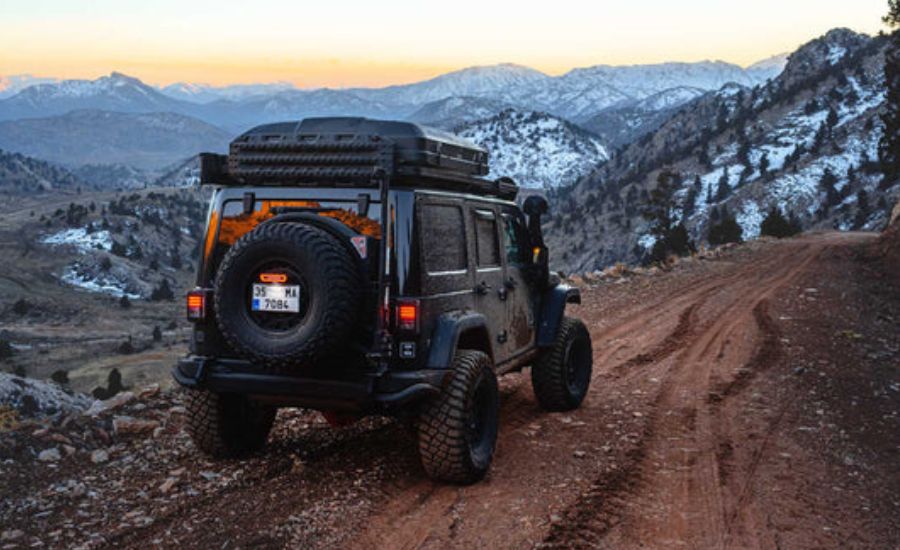
Water fording
The ability of Trail Rated vehicles to cross water is called water fording, and it is one of their most thrilling qualities. Driving through bodies of water, such as streams, rivers, and ponds without endangering the car or endangering the passengers’ safety, especially when driving off-road.
Jeep vehicles are designed to cross water thanks to several essential features. They have a high air intake that is situated above the roofline of the car.
This prevents water from entering the engine’s air intake and enables the Jeep vehicle to ford through water that is several feet deep.
The body design is frequently adjusted to reduce the possibility of water entering the cabin, and the electrical materials of the car are sealed to facilitate easy water fording and to prevent harm due to water.
It’s crucial to move slowly and deliberately when fording water because the depth and stream can change. Protector skids and trailer hitch are among the characteristics that a Jeep with a trail rating has to help drivers safely negotiate water obstacles.
Articulation
When one wheel hits an obstruction, a vehicle’s suspension system can flex and keep in contact with the earth. This is referred to as articulation.
Jeep Trail Rated cars have unique suspension systems that are tuned for off-road performance.
These suspension mechanisms often have components that enable the vehicle to flex and articulate over uneven terrains, such as longer control arms, stronger springs, and bigger shocks. Further enhancing articulation, a vehicle with a Jeep Trail-rated badge frequently has unique axle configurations that permit the wheels to distance one another.
Maneuverability
Trail-rated vehicles are made to be maneuverable. They can maneuver through narrow paths and make tight turns, thanks to their short wheelbase and small turning radius. Furthermore, a Jeep with a badge frequently has a sophisticated system with four wheels that enables it to operate precisely and swiftly, including on challenging terrain.
In situations like driving off-road, maneuverability is crucial since it enables drivers to safely and effectively negotiate difficult terrain. When navigating in confined spaces or around tight turns, a vehicle’s ability to reverse course rapidly and avoid obstructions is crucial.
Advantages of Jeep trail rated
Safety: With safety in mind, a Trail Rated vehicle frequently has a modern airbag system, stability control, and backup cameras as standard equipment.
They are therefore excellent choices for families and anyone who places a high value on safety when selecting a car.
Off-road capability: Jeeps with a trail rating are made to handle the roughest, most challenging off-road terrain. Jeeps with trail rating are equipped with specific suspension systems, 4-wheel drive systems, and other off-road capabilities that enable them to travel in areas where other vehicles are unable to.
Resale value: Jeep Wranglers Trail Rated are known for stability and off-road capability, which helps them maintain their value. This implies that you may anticipate receiving a healthy return on your investment when it comes time to sell or trade in your car.
Versatility: Owning Jeeps Trail-rated can be useful for numerous tasks. A vehicle that bears the Jeep Trail-rated badge can endure everything, whether you’re transporting cargo, pulling a trailer, or speeding on rough terrain.
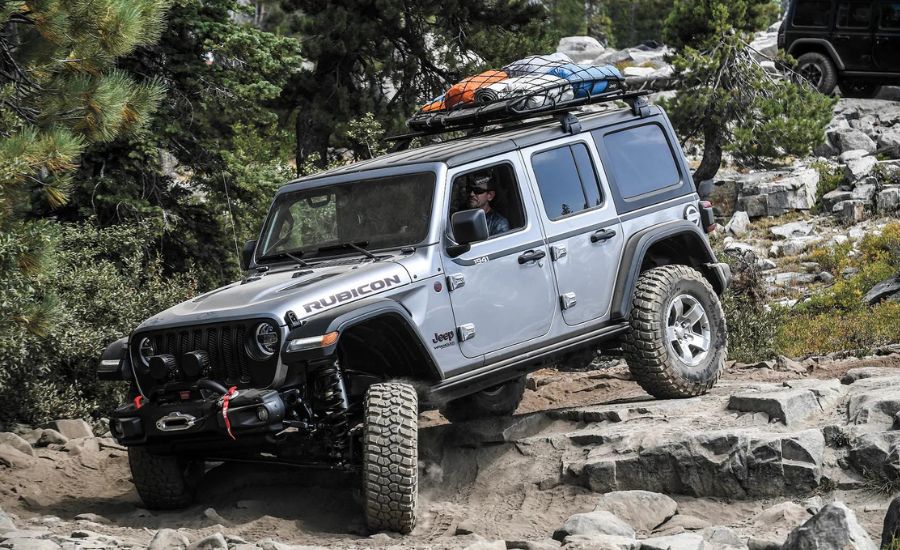
Non-trail Rated Jeeps: overview
Non-trail Rated Jeep is developed for general use and may not have the same system with four wheels, the same off-road features as a vehicle with a trail-rated badge, such as sophisticated chassis systems.
A Non-trail Rated Jeep is mostly installed with very comfortable interiors, making them a great choice for daily driving or long road journeys.
Due to the fact that they might not be installed with as many off-road components as Jeeps with trail rating, a Non-trail Rated Jeep has a higher fuel-efficiency.
Trail-rated Jeep vs Non-trail Rated Jeeps: comparison
The argument “Jeep Trail-rated vs Non-trail Rated” is mostly backed by the advantages of a Jeep Trail-rated. A Jeep that hasn’t earned a trail rating badge yet also has perks. Generally, they have differences.
Limited off-road performance: Vehicles lacking trail rating badges might not possess the same off-road capabilities as Jeeps with those badges. Other off-road characteristics that a Jeep with a badge possesses will not be present.
Less rugged appearance: Jeeps that aren’t Trail Rated will not appear as tough as Trail Rated versions. Less aggressive tires, skid plates, and other elements that give cars with a trail-rated badge their distinct appearance could be present.
Reduced resale value: Jeeps that aren’t Trail Rated could not keep their worth as well.
They might not command the same price on the secondhand automobile market since they don’t possess the same level of off-road prowess or reputation.
Limited towing capacity: Jeeps that aren’t Trail Rated might not be as efficient for towing as a Trail Rated vehicle. A Jeep that has a Trail Rating would be a better alternative if you intend to move heavy equipment or pull a trailer.
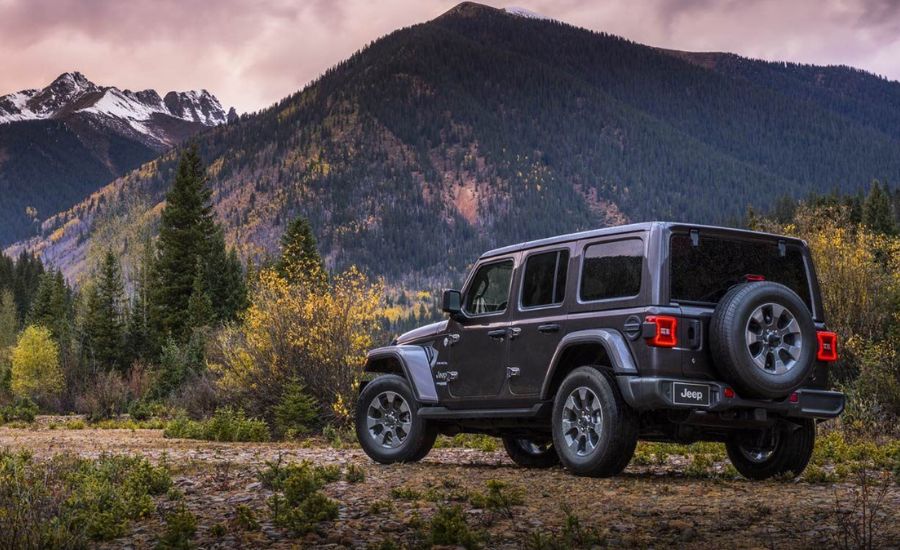
FAQ
What is the difference between a trail-rated Jeep and a non trail-rated Jeep?
The major distinction between the two is that a trail-rated car has gone through processes and tasks to ensure they are efficient during off-road driving.
What does it mean if a Jeep is trail rated?
If a Jeep is Trail rated, it means that it has undergone thorough off-road performance evaluation and has received the Jeep brand certification that it meets those requirements.
What Jeeps are not trail-rated?
The Grand Cherokee, Jeep Compass, Jeep Gladiator, Jeep Wrangler, and Jeep Cherokee are all examples of Jeep’s Trail-rated vehicles.
Are some Jeep Wranglers not trail-rated?
No, there is no Jeep Wrangler that does not have a Trail-rated badge. Every Jeep Wrangler model has undergone the trail rating process.
Conclusion
Considering Jeep Trail-rated vs Non-trail Rated, Jeep Trail Rated and Non-trail Rated vehicles have benefits and drawbacks. It’s critical to comprehend how they differ from one another and select the one that best suits your requirements.
Hopefully, this article has provided a clearer view comparing Jeep Trail Rated vs Non-trail Rated and choosing the perfect Jeep model.
If you need to read about Jeep Trail Rated vs Non-trail Rated, please read our article.

